The annexe in our garden pays our mortgage – here’s how your outdoor space could work for you
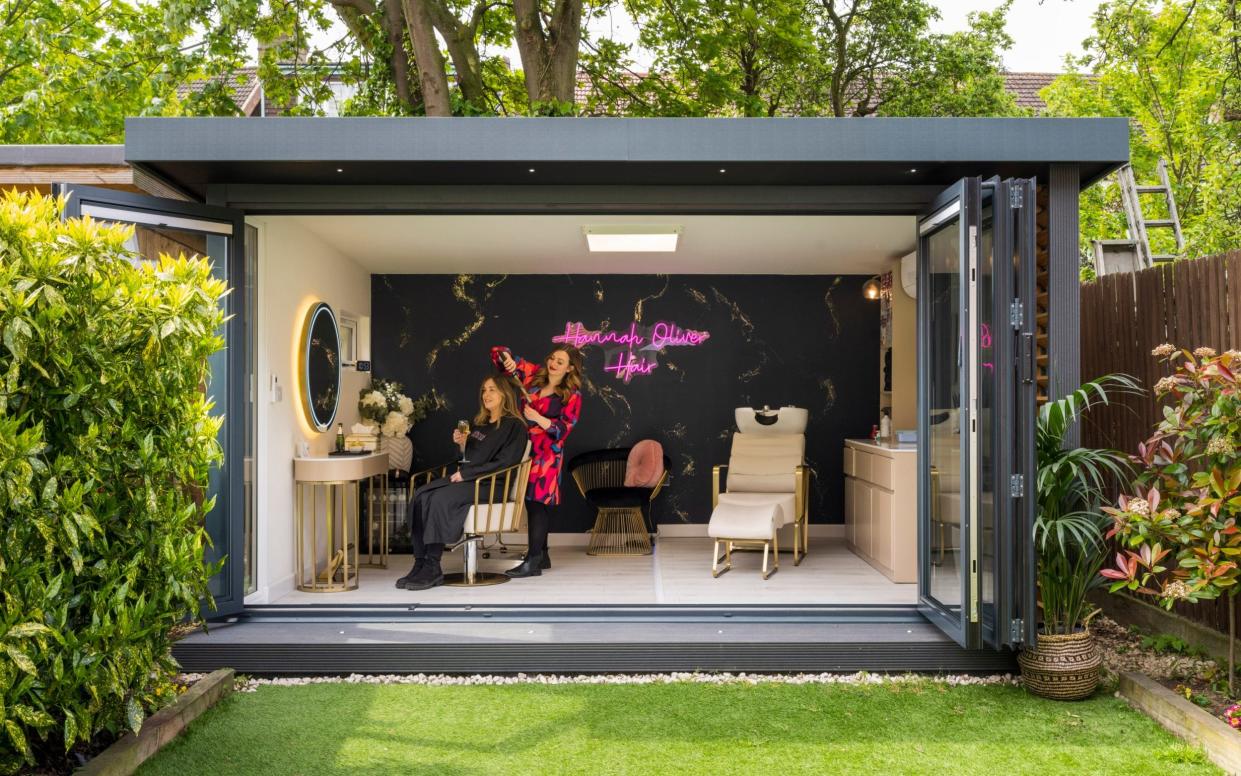
In a garden in south London, where the distinctive scent from a blossoming lilac tree wafts in the air, a woman prepares her work tools for the day. She is a hairdresser: her salon is in a modern annexe, specially constructed at the end of her lawn for the sole purpose of welcoming clients for their cut and blow-dry.
In another garden in Hove a yoga teacher takes classes in a specially adapted hut, and around the country people have converted outbuildings and tool sheds to create holiday lets they can rent out for extra money.
Earning an extra buck from the confines of your personal postcode has become the no-brainer way to top up the bank balance. Green Retreats, which sells contemporary garden rooms for up to £40,000, has customer testimonials on their website from tattooists, sculptors and even a taxidermist.
Yes, the initial outlay can be substantial. The sky is practically the limit for customised versions with some companies. You can opt for fitted kitchens, wet rooms, saunas, gyms – even a golf simulator if that’s your desire. But with the rising cost of living as well as travel expenses, parking charges, office rents, a £4.28 frappuccino… the appeal of a 20 metre commute to your workplace and the potential to earn a healthy income is a tempting option.
Phil Kerry, owner of Into The Wild UK, says that over the past 12 months, the company has seen a threefold increase in inquiries for their shepherd’s huts to be used as therapy studios, home offices and holiday lets. “Clients are establishing good businesses, while keeping their overheads low,” says Phil. “Top earners are those who can hold group sessions of up to five people an hour, in something like meditation or yoga, possibly live streaming it too.”

Post pandemic, holidaying in the UK boomed, and with it the rise of quirky huts, tree houses and converted outbuildings. A pigsty on farmland in Winchester topped Airbnb’s most “wishlisted” property in 2021, and is still going strong for this summer with bookings already secured at £200 a night.
Lisa Wilson, business development manager at outdoor glamping site, Canopy & Stars, says, “In terms of back garden lets, the best spaces are the ones that are secluded enough to allow guests to relax and not feel overlooked. Revenue can vary depending on the size of the space and the experiences on offer. A small tree house in a garden, like our Orchard Rooms in Somerset, would be making around £55-£65k of booking revenue annually, whereas a shepherd’s hut would be closer to £10-20k.”
And if there was still a smidgeon of doubt in the mind of a potential garden room customer, consider the value it might add to the main property. Estate agents are flaunting these bucolic accessories in their spiel to prospective buyers. Far more than a space for teenagers to hang out and play computer games in, they are a valuable resource for upping the appeal of your home. Green Retreats have worked with leading property experts to confirm that garden rooms boost the overall value by 5-15 per cent. And Rightmove, the UK’s biggest property website, has seen listings mentioning garden offices increasing by 1,046 per cent compared with 10 years ago.
Nick Ingle, office head at estate agent Strutt & Parker Salisbury, adds, “Our latest Housing Futures survey, which spoke to people looking to move in the next five years, found that just over a quarter of respondents said they need a work room in their next home. So transforming your garden room into a dedicated space will be beneficial to you now and down the line when you choose to sell.”
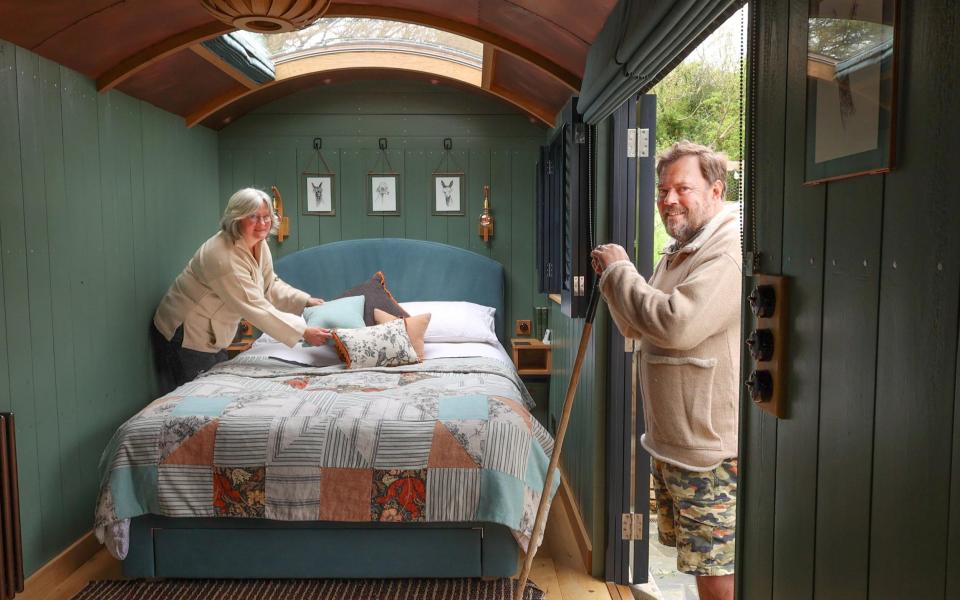
It feels important to add that a burgeoning market brings with it a desire for bigger and better choices. Customers are pushing the design boundaries, researching “no limit” options for bespoke blueprints. Size comes into play, and if you’ve got land, it’s enticing to think substantial and sumptuous. Remember, though, your build cannot take up more than 50 per cent of the total area around your house and must be less than three metres high. If it exceeds these requirements, you get into planning permission rules.
Luka Brzozowski, co-owner of A Room in the Garden, says his clients are keen for new developments in tech gadgetry and the latest creature comforts. “As these products become more advanced, I am seeing a higher demand for luxury builds, even full-time liveable spaces. There seems to be a movement towards parents gifting their children the family home and then setting themselves up in an annexe in the garden. We just built a £300,000 version for an older couple. It’s similar to a high-end modern bungalow with two bedrooms, two bathrooms, a walk-in wardrobe, utility room and huge glass doors opening on to the view.”
Regardless of whether it’s a fabulous contemporary prototype or a hand-painted wooden hut, owners tend to agree that the main benefit of their garden room is the peace of mind. Not only because a source of income has become possible, or the stressful day-in-day-out commute has been eliminated, or even the fact that they are only answerable to their own boss self.
The true benefit is the close connection with nature, a chance to escape to a quiet place, to be immersed in their work while all around them the birds sing and the seasons shift. The end of the garden; it’s a special place where magic often happens.
The hairdressing salon
‘I wanted my clients to feel inspired’
Hannah Oliver, 28, is a hairdresser. She lives with her husband, Mike, in south London. Hannah is expecting her first baby in August

I wanted to be a hairdresser ever since I can remember and started working in a salon as a Saturday girl at 13. Luckily, my school offered an NVQ in hairdressing and so with that behind me, I moved from Suffolk to London at 17 and got an apprenticeship at Trevor Sorbie in Covent Garden. From there, I went to Jo Hansford in Mayfair, where I learnt about colour, and then to Harrods for six years.
It was during the pandemic that my client list diminished and my wages dropped drastically. Something had to change and my husband suggested working more with private clients. I was sceptical at first but then I put up a post on a local Facebook chat and I got 60 responses within two hours. I was still at Harrods during the day and then travelling to clients at night or on the weekend.
It soon became too much, so I took the scary leap to launch my own full-time business. Then last year, Mike and I bought a semi-detached house with a reasonable-sized garden. I knew I wanted a more home-based venture but I wasn’t especially keen on working out of my kitchen. It’s a real pressure to keep your house spotless all the time and it can feel like an invasion of your privacy, so I decided to investigate garden rooms.
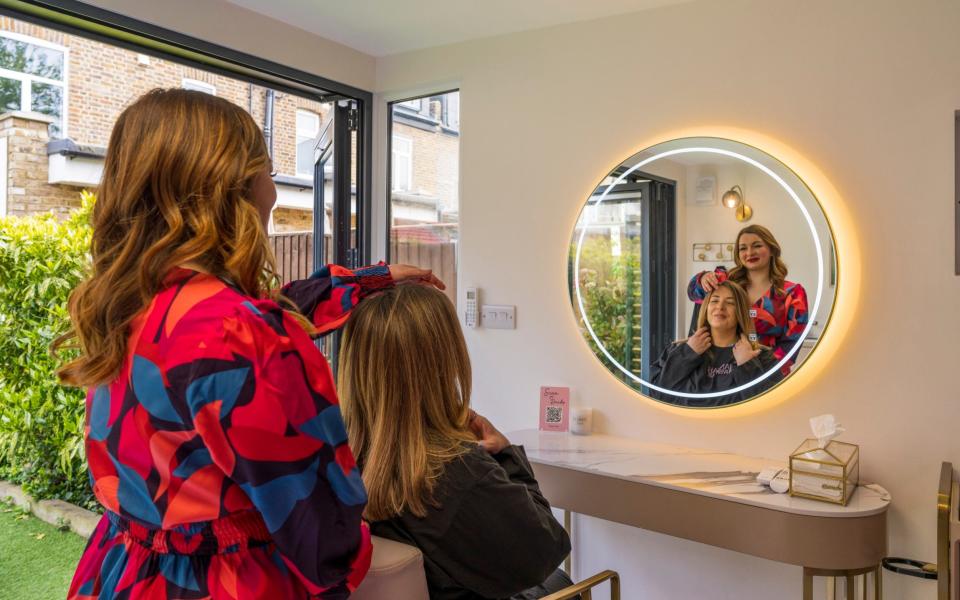
I did months of research until finally settling on Green Retreats, which provides high-end designs that look more like new-build homes than huts. I paid around £30,000 for the shell and then customised it to suit my needs with plumbing, hand-painted wallpaper, bespoke furnishings and my Hannah Oliver neon light – that came later once I realised photos were being posted on Instagram by clients and it was a chance for marketing.
I must admit, I have spent a lot of money on this room because I wanted it to be appealing enough for people to feel inspired to travel here – I have one client who comes from Wales. The business is currently very healthy and I know I’ll recover my costs. I am fully booked until I take my maternity leave in July. I love everything about my garden room. It’s such a personal reflection of me. And it’s a wonderful place to work.
I generally have one client at a time – sometimes two if they are friends – which makes it personal and chilled. Plus, there are no interruptions from reception, phones ringing or other members of staff telling me when my colour is ready. It feels like a great life-work balance, especially as I’ll soon be a mum. I have a nanny starting in October, so it’s reassuring to know that between clients, in just a few minutes, I can pop back to the house for a cuddle with my baby.
The converted tool shed
‘The alpacas are a big pull for our guests’
Wendy Scott, 54, and husband Tom, 55, are alpaca breeders on a farm on the edge of Bodmin Moor in Cornwall. They also run a holiday let from their converted tool shed – Little Inka – which sits in their garden

Tom and I had a major life plan. We agreed that when we reached 50 we would leave our corporate jobs at Sky TV, say goodbye to London and move to the countryside to work for ourselves. So in 2017, we started looking for a house with space and the opportunity for a business. We ended up in this beautiful spot with a 19th-century stone farmhouse and 20 acres of land.
Of course, we immediately realised that’s a lot of grass! And we needed some kind of animal to eat it. The decision was made when Tom sent me on a two-day alpaca husbandry course as a birthday present. Afterwards, we both loved the alpacas so much, we went straight off and bought our first herd of 10. We now have 32 which we use for breeding and their fleece, but the alpacas are also one of the main attractions with our guests in Little Inka.
We started the homestay a couple of years ago as a way of supplementing our income. We knew we wanted to offer guests a luxurious experience. Of course, that meant we needed to invest a substantial amount of money into the renovation of the original granite tool shed which was built around 1850 and was pretty rundown.
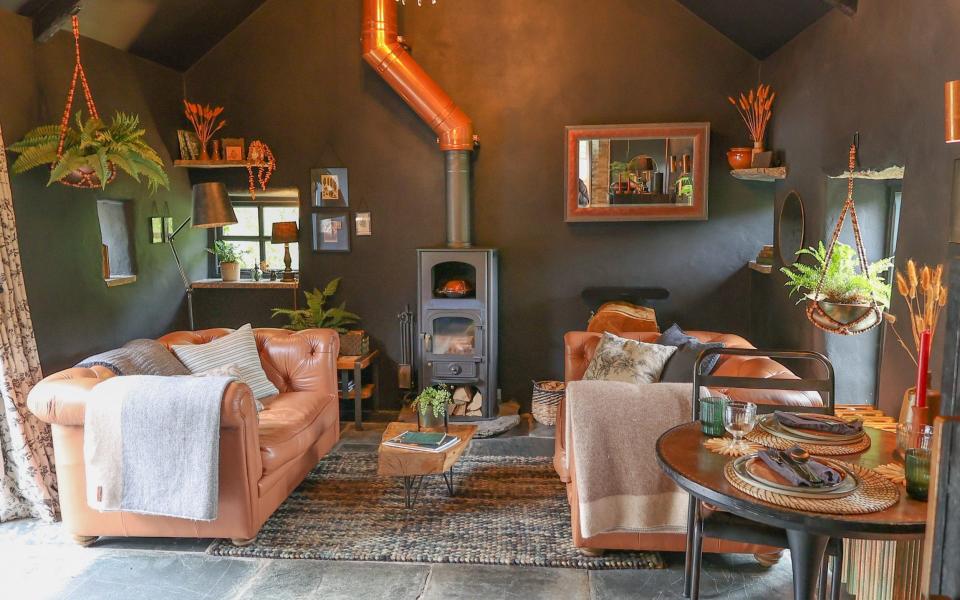
We had local builders and craftspeople working with local materials to lay the slate floors, create the courtyard walls from the granite we excavated and add a zinc-clad bathroom extension. The main tool shed houses the kitchen and living area, and we bought a shepherd’s hut to act as the bedroom. This is a long-term investment for us, and it was our goal to break even within five years, which we are currently on track to do. The main financial outlay is done, so now it’s just about maintenance and the fairly low running costs. In our first full year, we were 80 per cent booked, and that provided a gross income through Unique Homestays of £75,000 before commission and costs. We’re very satisfied with that.
To be honest, when we first decided to go ahead with the homestay, we weren’t sure we would enjoy it but we really do.
It’s very manageable as there are only ever two guests at a time, and almost everyone who stays here is lovely and super-interested in the alpacas.
I can also proudly say we’ve had three marriage proposals in Little Inka. It’s a special place that people seem to fall in love with.
The yoga retreat
‘The garden is my sanctuary and workplace’
Marleen Kinder, 45, is a yoga teacher and married to Robert, who runs Brighton Fishing Museum Coffee Shop. They live in Hove and have two children, Oliver, 15, and Annabelle, 12
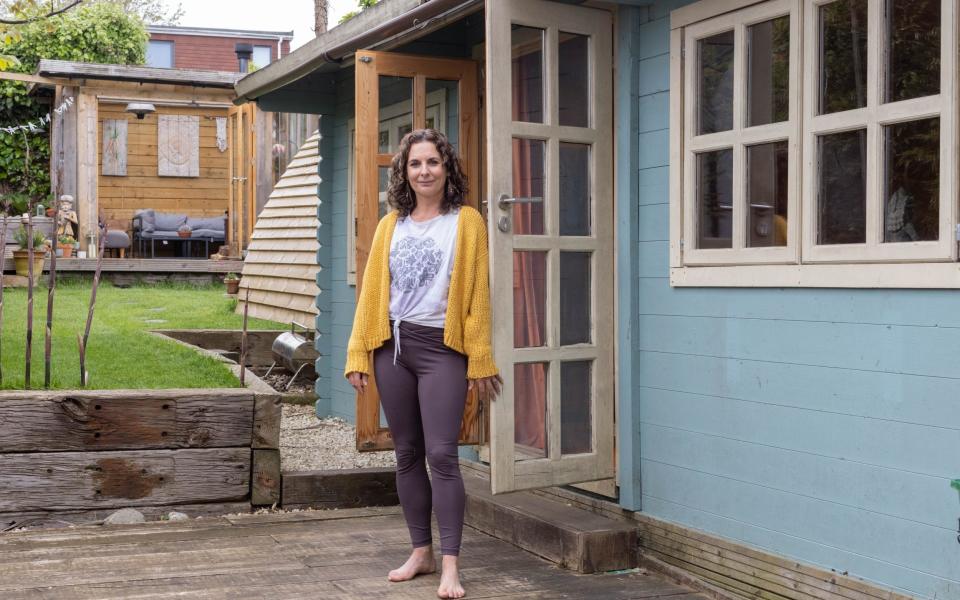
My garden is my sanctuary. It’s a place of peace and relaxation. So it makes complete sense to me to work here. I’ve been teaching yoga for the past 10 years. Part of my British Wheel of Yoga training meant I had to practise with small groups of people, so I held classes in my living room for a while. I really enjoyed that close connection and I wondered how I could turn the classes into a business. The idea of setting up a hut in my garden seemed like the perfect solution.
I love the fact that there is no travelling to work or carrying loads of kit around. Here, I can control the set-up, and I work hard to make it comfortable and personal for my clients. Most of them I know extremely well so it’s essential that their experience is nurturing.
I bought the wooden hut a few years ago from a local supplier for about £3,500. It came as a pack and my husband put it together. I do paint it every year and last year I invested in underfloor heating, but generally the maintenance costs are very manageable. The hut comfortably holds up to six people, and I run five classes a week.

More recently, I decided to install a separate garden sauna and a cold-water bath in the garden. I had Covid earlier this year and was experiencing chronic dizziness. I tried all sorts of things, but it was the cold-water dips that really helped me. That inspired me to introduce day and evening retreats where groups of clients can have a yoga session, sauna and then an optional cold-water shower or full immersion – most people opt for the bath with its 40kg of ice!
It’s always loads of fun and afterwards we sit and chat around the wood-burning fire with a hot drink. I love that people come here to feel a sense of support. I have built a strong community in this little garden, which is only 18 metres long and six metres wide. A huge plot of land isn’t necessary to create something special, you just need the intention and a bit of green space.


